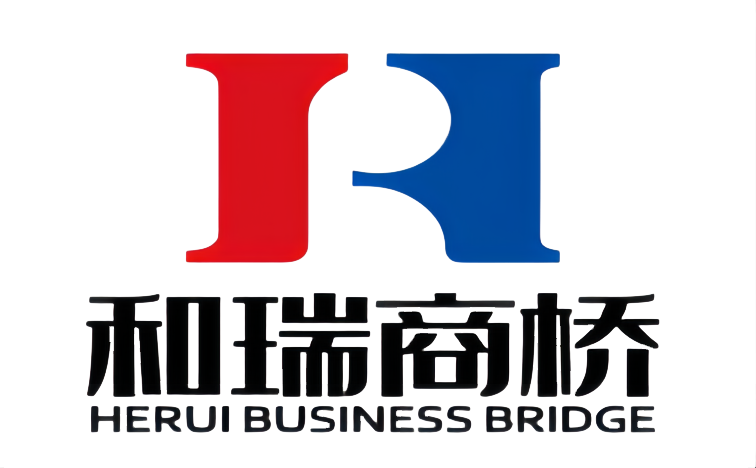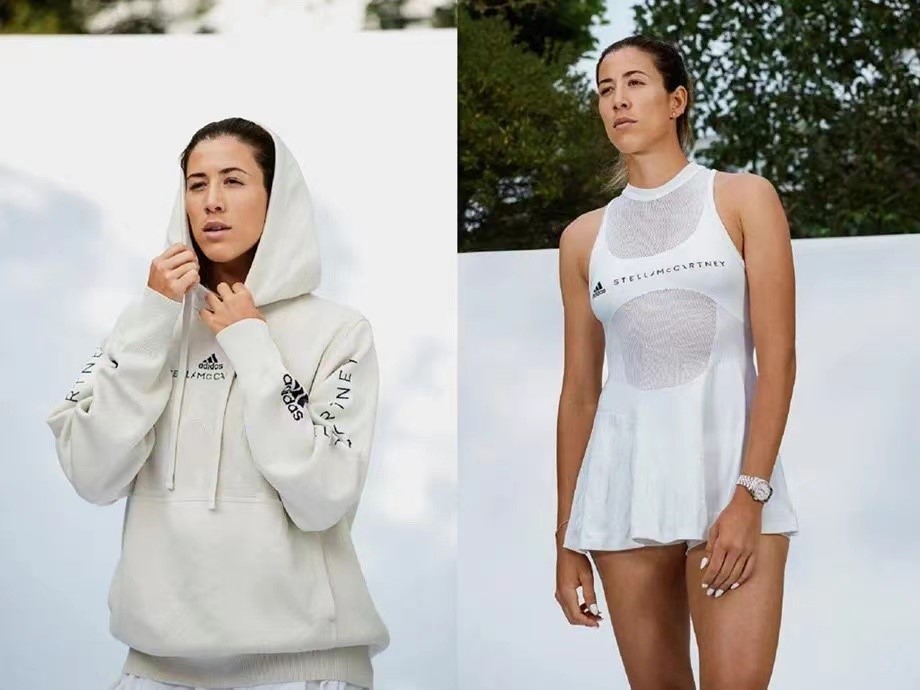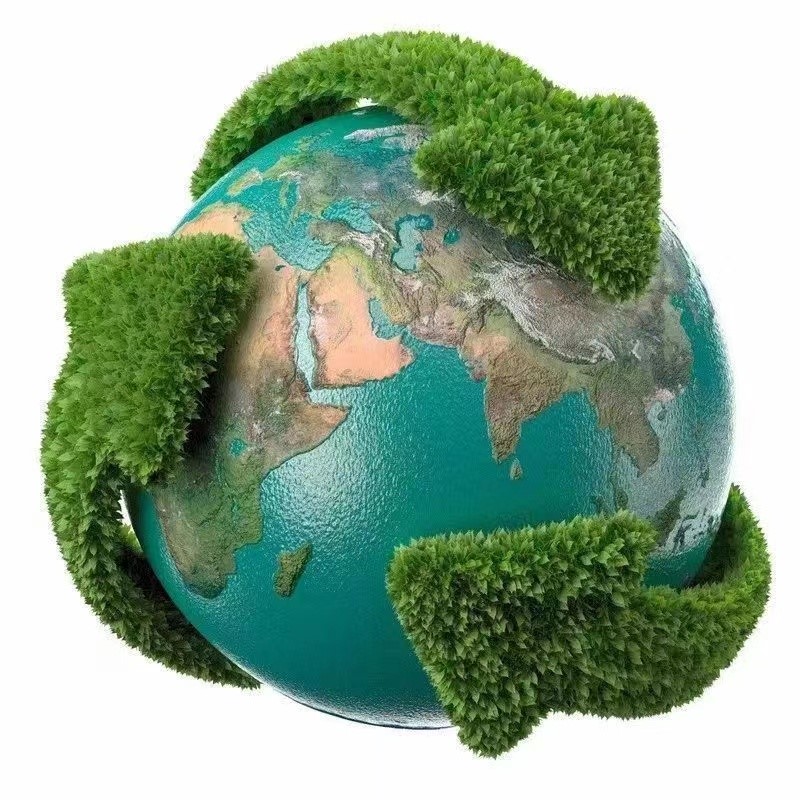Adidas, a German sports giant, and Stella McCartney, a British designer, announced that they would launch two new sustainable concept clothes – the 100% recycled fabric Hoodie infinite Hoodie and the bio fiber tennis dress.
The 100% recycled fabric Hoodie infinite Hoodie is the first commercial application of old clothes recycling technology nucycl. According to Stacy Flynn, co-founder and CEO of evrnu, nucycl technology “essentially turns old clothes into new high-quality raw materials” by extracting the molecular structural blocks of the original fibers and creating new fibers repeatedly, thus prolonging the life cycle of textile materials. Infinite Hoodie uses a complex jacquard knit fabric made of 60% nucycl new materials and 40% recycled reprocessed organic cotton. The launch of infinite Hoodie means that high-performance clothing will be fully recyclable in the near future.
Biofibric tennis dress is jointly developed with bolt threads, a bioengineering sustainable material fiber company. It is the first tennis dress made of cellulose blended yarn and microsilk new material. Microsilk is a protein based material made of renewable ingredients such as water, sugar and yeast, which can be fully biodegradable at the end of the service life.
In the first half of this year, Tebu Group Co., Ltd. (hereinafter referred to as “Tebu”) released a new environmental protection product – polylactic acid T-shirt in Xiamen, Fujian Province. The proportion of polylactic acid in the new product rose sharply to 60%.
Polylactic acid is mainly fermented and extracted from corn, straw and other crops containing starch. After spinning, it becomes polylactic acid fiber. Clothes made of polylactic acid fiber can be naturally degraded within 1 year after being buried in soil under specific environment. Replacing plastic chemical fiber with polylactic acid can reduce the harm to the environment from the source. However, due to the high temperature resistance of polylactic acid, the temperature of its production process is required to be 0-10 ℃ lower than that of ordinary polyester dyeing and 40-60 ℃ lower than that of setting.
Relying on its own environmental protection technology platform, it specially promoted environmental protection in the whole chain from the three dimensions of “environmental protection of materials”, “environmental protection of production” and “environmental protection of clothing”. On the day of world environment day on june5,2020, it launched a polylactic acid windbreaker, becoming the first enterprise in the industry to overcome the problem of polylactic acid coloring and achieve mass production of polylactic acid products. At that time, polylactic acid accounted for 19% of the whole windbreaker fabric. One year later, in today’s polylactic acid T-shirts, this proportion has risen sharply to 60%.
At present, products made of environmentally friendly materials have accounted for 30% of the total category of Tebu group. Tebu said that if all the fabrics of Tebu products are replaced with polylactic acid fiber, 300million cubic meters of natural gas can be saved a year, which is equivalent to the consumption of 2.6 billion kilowatt hours of electricity and 620000 tons of coal.
According to the special spoiler, the PLA content of knitted sweaters they plan to launch in the second quarter of 2022 will be further increased to 67%, and 100% pure PLA windbreaker will be launched in the third quarter of the same year. In the future, Tebu will gradually achieve breakthroughs in the application of polylactic acid single products, and strive to achieve a single season market release of more than one million polylactic acid products by 2023.
At the press conference on the same day, Tebu also displayed all environmental protection products of the group’s “environmental protection family”. In addition to the ready-made clothes made of polylactic acid materials, there are also shoes, clothing and accessories made of organic cotton, serona, DuPont paper and other environmental protection materials.
Allbirds: gain a foothold in the highly competitive leisure sports market through new materials and the concept of sustainability
It may be hard to imagine that allbirds, the “favorite” in the field of sports consumption, has only been established for 5 years.
Since its establishment, allbirds, a footwear brand that emphasizes health and environmental protection, has a total financing amount of over US $200million. In 2019, the sales volume of allbirds has reached US $220million. Lululemon, a sportswear brand, had a revenue of US $170million a year before it applied for IPO.
Allbirds’ ability to gain a foothold in the highly competitive leisure sports market is inseparable from its innovation and exploration in new materials. Allbirds is good at using a variety of innovative materials to continuously create more comfortable, soft, lightweight, green and environmentally friendly products.
Take the tree runner series launched by allbirds in march2018 as an example. In addition to the wool insole made of merino wool, the upper material of this series is made of South African eucalyptus pulp, and the new midsole material sweet foam is made of Brazilian sugarcane. Sugarcane fiber is lightweight and breathable, while Eucalyptus fiber makes the upper more comfortable, breathable and silky.
Allbirds’ ambition is not limited to the shoe industry. It has begun to expand its industrial line to socks, clothing and other fields. What remains unchanged is the use of new materials.
In 2020, it launched the “good” series of green technology, and the Trino crab T-shirt made of Trino material + chitosan was eye-catching. Trino material + chitosan is a sustainable fiber made from chitosan in waste crab shell. Because it does not need to rely on metal extraction elements such as zinc or silver, it can make clothes more antibacterial and durable.
In addition, allbirds also plans to launch leather shoes made of plant-based leather (excluding plastic) in December 2021.
The application of these new materials has enabled allbirds products to achieve functional innovation. In addition, the sustainability of these new materials also constitutes an important part of their brand values.
The official website of allbirds shows that the carbon footprint of a pair of ordinary sneakers is 12.5 kg CO2e, while the average carbon footprint of the shoes produced by allbirds is 7.6 kg CO2e (carbon footprint, that is, the total greenhouse gas emissions caused by individuals, events, organizations, services or products, to measure the impact of human activities on the ecological environment).
Allbirds will also clearly indicate on its official website how much resources can be saved by environmentally friendly materials. For example, compared with traditional materials such as cotton, the Eucalyptus fiber material used by allbirds reduces water consumption by 95% and carbon emissions by half. In addition, the laces of allbirds products are made of recyclable plastic bottles.(Source: Xinhua Finance and economics, Yibang power, network, comprehensive finishing of textile fabric platform)
Sustainable fashion — from nature to returning to nature
In fact, as early as this year, before China put forward the concept of “carbon peaking and carbon neutralization”, environmental protection, sustainable development and social responsibility have been one of the continuous efforts of many enterprises. Sustainable fashion has become a major development trend of the global clothing industry that can not be ignored. More and more consumers begin to pay attention to the positive significance of products to the environment – whether they can be recycled, whether they can cause low pollution or even zero pollution to the environment, and are more and more likely to accept the ideas contained in products. They can still reflect their personal sense of value and reputation while pursuing fashion.
Major brands continue to innovate:
Nike recently released the first “move to zero” series of environmental protection underwear, aiming to achieve zero carbon emission and zero waste by 2025, and only renewable energy is used in all its facilities and supply chains;
Lululemon launched leather like materials made of mycelium in July this year. In the future, it will launch nylon with plants as raw materials to replace the traditional nylon fabrics;
Italian luxury sports brand Paul & Shark uses recycled cotton and recycled plastic to make clothes;
In addition to downstream brands, upstream fiber brands are also constantly seeking breakthroughs:
In January last year, Xiaoxing company launched the creora regen spandex produced with 100% recycled ingredients;
Lanjing group launched completely degradable plant-based hydrophobic fibers this year.
From recyclable, recyclable to renewable, and then to biodegradable, our journey is the sea of stars, and our goal is to take it from nature and return to nature!
Post time: Jun-02-2022



